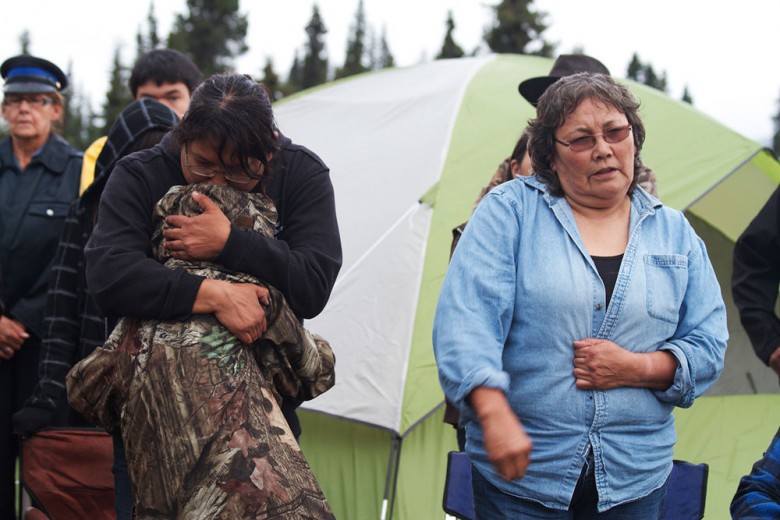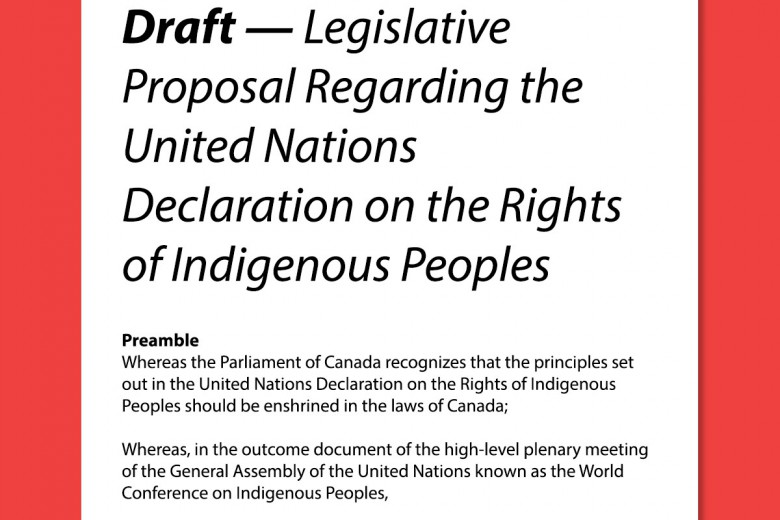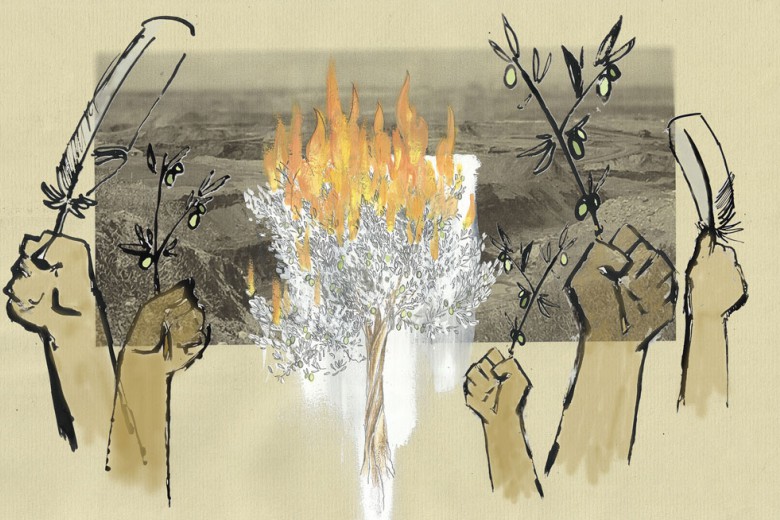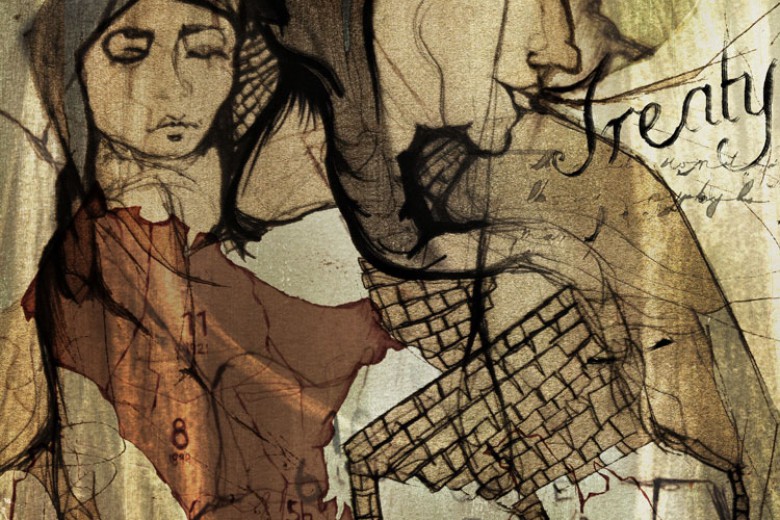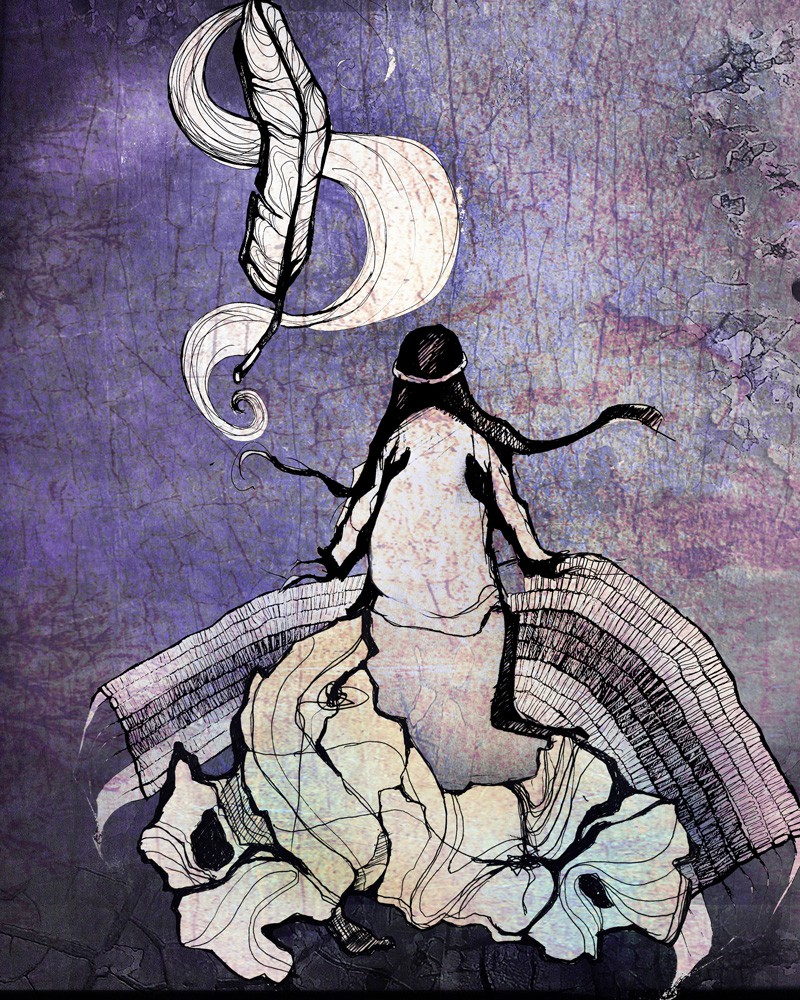
A few months ago, I travelled from Mississauga, Anishinaabeg territory on the north shore of Lake Ontario, to Victoria, B.C., to speak in the Indigenous governance program’s lecture series. Before I left, I consulted with an Elder to remind myself of the protocols and diplomatic traditions we carry with us when visiting another nation. I wanted to make sure that I was respectful of both my Ancestors and of the Peoples whose homelands I was visiting.
Doug Williams from Curve Lake First Nation always makes time to meet with me and answer my questions. He reminded me to acknowledge the territory I was visiting directly after I had shared with the audience my clan affiliation, where I was from, and my name. We talked about how as a visitor in another’s territory, my primary responsibility would be to listen and to take direction from my gracious hosts. We talked about our protocols and processes of engagement that foster and maintain good relationships between our nation and neighbouring nations. We talked about how even though I am not a political leader, I carry those responsibilities no matter where I go. Off I went to Victoria.
I spoke in the First Peoples House at the University of Victoria, a beautiful building designed in the Coast Salish style. At the end of my talk, after having acknowledged that I was in the territories of the WSÀNÈC and the Lekwungen nations, a WSÀNÈC student came over and thanked me for that recognition. Although he couldn’t understand exactly what I said in my language, he heard the word “WSÀNÈC” and recognized my engagement with the protocols and philosophies of Anishinaabeg diplomacy. He was appreciative that I had invoked Indigenous political protocols of engagement even though our two nations have no formal diplomatic ties.
Had I been moving to Victoria, this kind of diplomacy would have carried even greater responsibilities. According to my own traditions, I would have a responsibility to listen, to learn, and to appreciate the jurisdiction, political culture, and traditions of the nation within which I was residing. I would have a responsibility to understand the issues this nation was facing, and I would have an obligation to support them and to stand with them. I would have a sacred duty to learn about my place and role within their political structure and their culture, and I would expect the same if one of their citizens moved to my territory.
A few weeks later, in the same room I spoke in at the University of Victoria, local Idle No More organizers held a teach-in. It was broadcast online and attracted over 1,000 people between the webcast and the live audience. Wab Kinew, a well-known Anishinaabe from the northwestern part of our nation, was one of the speakers. During his presentation he passed out gifts to the other panelists. Watching online, I smiled as he did this. Kinew was invoking the protocols of Anishinaabeg engagement. He was pointing to ancient traditions and acknowledging their importance and their relevance in contemporary society. He was honouring his hosts and fellow panelists.
Drawing on diplomatic traditions
Idle No More is the most recent surge in Indigenous resistance, a resistance that has been ongoing since the beginning of colonial conquest. Throughout history, Indigenous Peoples have continuously engaged in diplomatic traditions to seek restitution from the Crown for the abuses suffered under colonial rule and to forge a new, peaceful relationship. Each nation has its own spiritual and political mechanisms, rooted in its own unique legal system, for maintaining the boundaries of territory, for immigration and citizenship, and for developing and maintaining relationships with other nations regarding territory, the protection of shared lands, economy, and well-being, among many other things. Indigenous diplomatic traditions generate peace by rebalancing conflict between parties. Spiritual and social practices such as storytelling, the oral tradition, ceremonies, feasting, and gift-giving are designed to bond people together toward a common understanding. Our diplomacy concerns itself with reconciliation, restitution, mediation, negotiation, and maintaining sacred and political alliances between peoples.
The Idle No More movement has referenced these diplomatic traditions repeatedly in both our actions and our words. In early December, the media showed images of Wiindawtegowinini (Isadore Day), chief of Serpent River First Nation, carrying the 1764 Treaty of Niagara Covenant Chain Wampum Belt onto Parliament Hill. The Onondaga nation and its Two Row Wampum Renewal Campaign brought a large replica of the Two Row Wampum into the city streets, and countless grassroots leaders have talked about the importance of honouring treaties as a way of transforming the relationships between Indigenous nations and the Canadian state.
On the West Coast in mid-February, hereditary Chief Beau Dick of the Kwakwaka’wakw nation walked from his homeland to the legislature in Victoria to perform a ceremony that involved breaking copper. To the Kwakwaka’wakw people, copper is a symbol of justice, truth, and balance, and to break copper in ceremony communicates a threat, an insult, or a challenge. Chief Dick and his supporters performed the ceremony on the lawn of the legislature because they want to change the political relationship they have with Canada – like their Ancestors, they are demanding a relationship based on justice, truth, balance, and protection of their homeland, the environment, and their way of life.
A sacred bond
Going to public school in the 1980s in rural southern Ontario, I learned nothing about Indigenous diplomacy. My experience is by no means unique. Unless Canadians have taken it upon themselves to seek out Indigenous political traditions, they likely have encountered few opportunities to learn about Indigenous diplomacy and our legal and political perspectives – yet it is precisely these concepts that hold the most promise for resetting the relationship with Canada.
For us in the Mississauga part of the Anishinaabeg nation, treaties are ongoing relationships. The word relationship is paramount here. Anishinaabeg political and philosophical traditions emphasize good relationships – with the natural world and with neighbouring nations – as the basis of good governance and a good life. For Anishinaabeg, signing a treaty means a commitment to ongoing meaningful negotiations. It means a political relationship that recognizes and respects parties’ nationhoods, legal traditions, and sovereignties. This is true whether the agreement is between the Anishinaabeg and the natural world, another Indigenous nation or confederacy, or a nation-state.
Treaties, from this perspective, are alliances with a commitment to continual renewal. Our politics are embedded within our spirituality, making treaties a shared, sacred bond between peoples. They are a commitment to stand with each other, a responsibility to take care of shared lands, and an appreciation of each other’s well-being. They are based on a profound mutual respect, and they are meant to be transformative. They transform conflict into peace by holding parties accountable for past injustices. They transform hardship into sustenance. They transform abuse of power into balanced relations. Treaties and other Indigenous diplomatic traditions transform differing perspectives into, as the Haudenosaunee say, “one mind.”
While Canada continues to engage in narrowly defined “modern treaty making” through processes like the B.C. Treaty Process and the federal Comprehensive Land Claims Agreements that require Indigenous nations to give up title and terminate many of their rights, Indigenous nations are moving forward with the resurgence of their own diplomatic traditions.
In 2011, a small delegation of people from Kitchenuhmaykoosib Inninuwug (KI) First Nation in northwestern Ontario travelled to Ardoch Algonquin First Nation (AAFN) in central Ontario to receive a Wampum Belt, or treaty, made by the women of AAFN. The bond between the two communities goes back to 2008 when members of the KI council were jailed for refusing to allow mining exploration in their territory. At the same time, Ardoch community member Bob Lovelace was also jailed for his role in resisting uranium prospecting in Ardoch territory. Paula Sherman, a family head on the traditional governing council of the AAFN, said at the ceremony: “As we present this belt, we pledge the support of our community to yours as you continue to deal with mining companies and governments.” Cecelia Begg, a member of the KI council and also a member of the KI Six who were jailed in 2008, accepted the belt on behalf of her community, saying, “We thank you for this. It marks our strong bond, a bond we may need to call upon as we face another struggle.”
Even in a modern context, treaties are a storied political relationship, consolidating sacred bonds between peoples. They are not about the cession of land or the surrender of Aboriginal title, nor do they assimilate Indigenous law into Canadian law. They are not a bill of sale. They are not a policy discussion. Whether the treaty-making process is historic or contemporary, treaties are not termination agreements.
Separate sovereignties on a shared territory
There is much evidence both in the oral tradition and in the historical record that, over time, Canada engaged in a treaty-making process that was increasingly based on coercion, deception, and violence. The Cree signed Treaty 6 while facing starvation from the massacre of the buffalo, a smallpox epidemic, and increasing settler violence. The final report of the Royal Commission on Aboriginal Peoples documents several examples of misunderstandings, problems in translation, and acts of fraud on the part of the state. Although the numbered treaties were negotiated in the oral tradition of Indigenous diplomacy, the Crown failed to record Indigenous perspectives on these agreements. They did not implement what they agreed to within their own legal traditions and written documents, let alone Indigenous oral understandings.
So yes, the treaty-making process in Canada was fraught with duress. Yet, even as the political power was shifting in favour of settler governments during the signing of the numbered treaties, Indigenous leaders continued to exercise agency within the process. The negotiations for Treaty 3 were extremely difficult, and the Crown ended up making several concessions to the Anishinaabeg. Treaty 7 was negotiated under the reality that the Blackfoot Confederacy had been successful in defending their territory from outside encroachment. Indigenous Peoples still believe in the strength of their oral understandings of these agreements because, even under the threat of violence, our Ancestors made intelligent and far-reaching decisions as best they could.
Instead of interacting with First Nations through these negotiated international agreements, successive Canadian governments have chosen to interact with First Nations through the Indian Act. This continues to be a crucial mistake. Many of us believe Indigenous diplomacy is the best way forward in developing a just and fair relationship with the Canadian state, because this kind of diplomacy carries within it the terms for a nation-to-nation relationship that is respectful of separate sovereignties and nationhoods over a shared territory.
Oftentimes, divisions between Indigenous nations that signed historic treaties and nations that did not are amplified in the mainstream media. It’s an arbitrary division because treaties are simply the embodiment of a much larger set of politics and philosophies rooted in each nation’s system of international law, peacemaking, conflict resolution, and negotiation. The fundamental principles of protection of land and Indigenous ways of life, governance, nationhood, sovereignty, sharing, and non-interference remain consistent whether manifested in Mi’kmaq law or Gitksan Witsuwit’en law and regardless of whether Indigenous nations signed treaties or not.
We are all treaty people
When I asked my Elder about how to behave in another nation’s territory, he reminded me that it is individuals who carry political responsibilities within them. Indigenous diplomacy is not so much about dialogue, but about action and embodiment. Treaties are not just between Indigenous nations and the Canadian state; they are carried and acted out through the actions of individual people. In December of last year, Idle No More organizers in Toronto organized a large round dance in the intersection of Yonge and Dundas. During the round dance, I saw a non-Native man with a sign that read, “We are all Treaty People.” Under that, he had written the treaties that he was a part of, based on where he was currently living and where he grew up. He was reminding his fellow Canadians that they have enjoyed treaty rights for hundreds of years, and that they also need to uphold their treaty responsibilities.
Mohawk scholar Taiaiake Alfred notes that Idle No More has demonstrated that many Canadians are supportive of a principled movement lead by Indigenous Peoples that addresses the protection of the land and the environmental, social, economic, and political issues facing Indigenous communities. If the resurgence of Indigenous political traditions is widely seen as the next step in decolonizing our relationship with Canada, it is critical that we understand and recognize the contemporary resilience and manifestations of Indigenous diplomacy. This kind of peacemaking is diplomacy based on love – the love of land and the love of our people – and this alone has the power to transform Indigenous-state relations into a relationship based on justice, respect, and responsibility.


